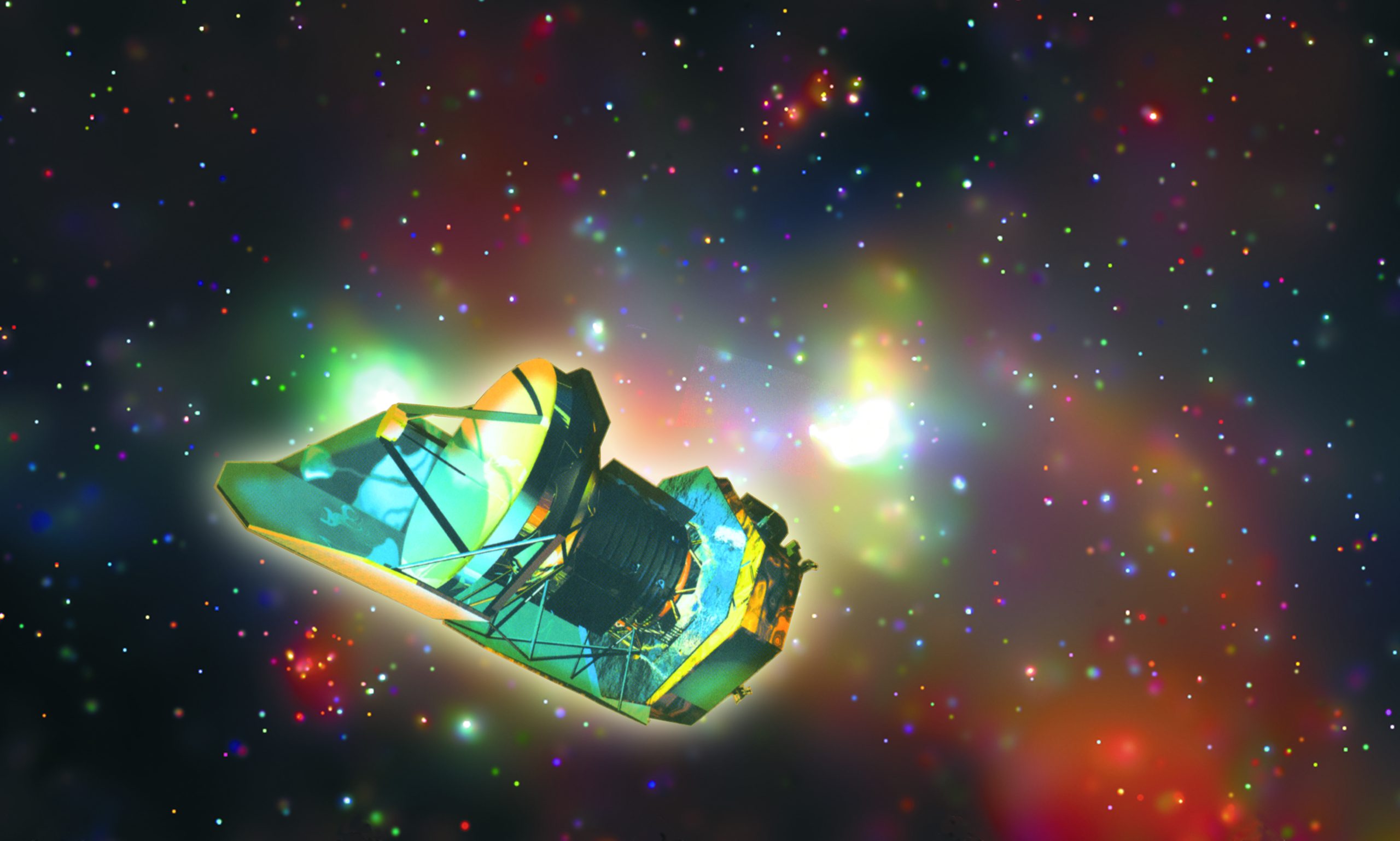{multithumb thumb_width=200}

Groningen astronomers recently celebrated a nice record – there are now a hundred scientific publications with a Groningen author on the results from the Herschel space laboratory. Achieving this record coincided with ‘The Universe Explored by Herschel’, a major conference held at ESA/ESTEC (Noordwijk) last week.
Over 350 astronomers from all over the world gathered to discuss the discoveries made by the infrared space laboratory. Groningen researchers have been very successful – of the total of 770 publications, 100 have a Groningen author or co-author.
Herschel – the largest telescope in space – was the fourth Cornerstone mission of the Horizon 2000 programme of the European Space Agency (ESA). Herschel was launched in May 2009 from French Guyana and carried three scientific instruments with it: HIFI, developed and built by the Dutch SRON (Netherlands Institute for Space Research) in Groningen/ Utrecht, PACS, built by a German consortium, and SPIRE, built by an international consortium led by the British.
Herschel functioned virtually flawlessly up to 29 April 2013, and thus exceeded the planned lifespan of 3.5 years. At the Noordwijk conference, the newest discoveries made with Herschel were reported on, in all fields of astronomy. These included studies of the planets and asteroids in our solar system, the birthplaces of planets around other stars, the birth and death processes of stars, the Milky Way and its neighbouring systems, distant quasars and the earliest stellar systems which evolved in the young universe.
Groningen researchers have conducted pioneering research with the HIFI instrument in particular, but of course also with PACS and SPIRE. Incidentally, there is no end in sight yet. Only a tiny proportion of the Herschel observations have been analysed so far and the astronomers expect to need at least another five years to work out all those observations in detail.
Productive cooperation
Dr Frank Helmich, scientific project leader for HIFI (SRON): ‘Herschel made 26,000 scientific observations. About 10% of the heavens were observed. Dutch astronomers have made very good use of these observations. They were able to build on the scientific preparations linked to the hardware development for the HIFI instrument by an international consortium headed by SRON, and on the guaranteed observation time that SRON received in return.’
Prof. Peter Barthel of the Kapteyn Institute of the University of Groningen has been involved as scientific advisor for Herschel since 1997 – the Mission Scientist. ‘Herschel has been an enormous success’, says Barthel. ‘The observations that my team could make with the PACS and SPIRE instruments have resulted in a breakthrough in understanding how stellar systems were formed in the early universe. Researchers from the University of Groningen have been working productively for decades with the SRON instrument builders; together we have achieved a top position in infrared astronomy.’
Unique information
His Groningen colleague Prof. Inga Kamp is also very satisfied. ‘The PACS instrument enabled us to catch the first ever glimpse in infrared of the gas in the rings in which planets are busy being created. Together with the quantities of dust that these rings produce, this provides an upper limit for the material that can be used to create earth-like planets – unique information. Another exciting event was the discovery of water at about a thousand degrees Kelvin around these young stars. The SRON expertise has been extremely important in all this, including at national level within our top research school NOVA.’
SRON researcher and Groningen Professor Floris van der Tak is involved in many projects with HIFI, the ‘molecule hunter’. ‘By scanning very distant infrared with HIFI, we have been able to measure thousands of spectral lines in the star-formation area, including thirty of water – enough to say exactly where in that area the water is concentrated. The most recent publication by my team – the 100th for Groningen! – reveals that most of the water is frozen in layers of ice, or is being broken down by the ultraviolet rays of young stars. This fits the general picture that we have been able to build about star formation thanks to Herschel, where only gas that is warm enough and light enough (in which water appears as vapour) is actively involved in the formation of new stars.’


